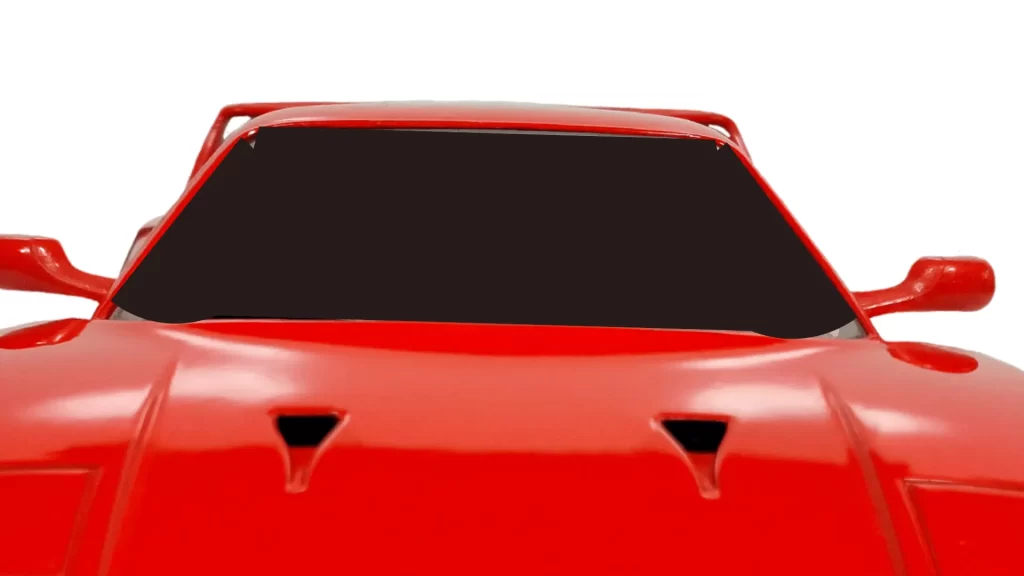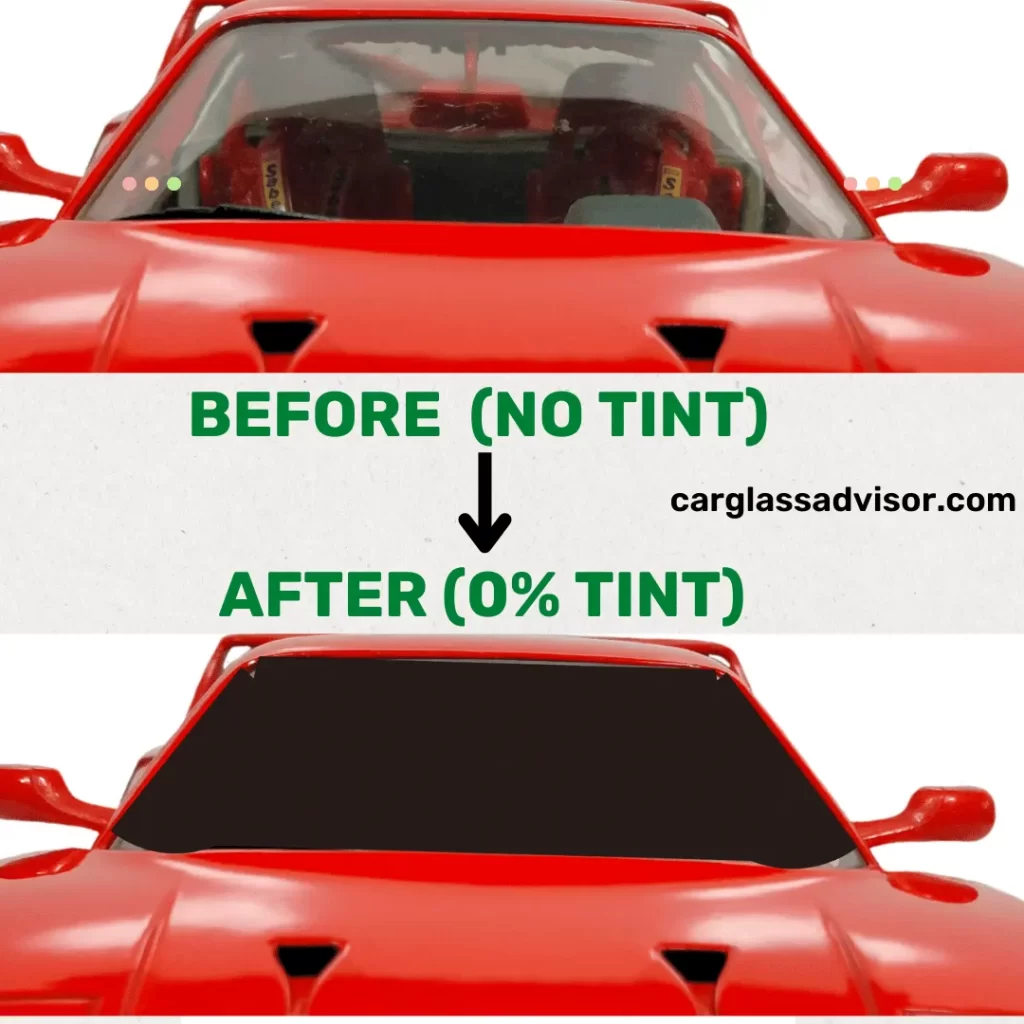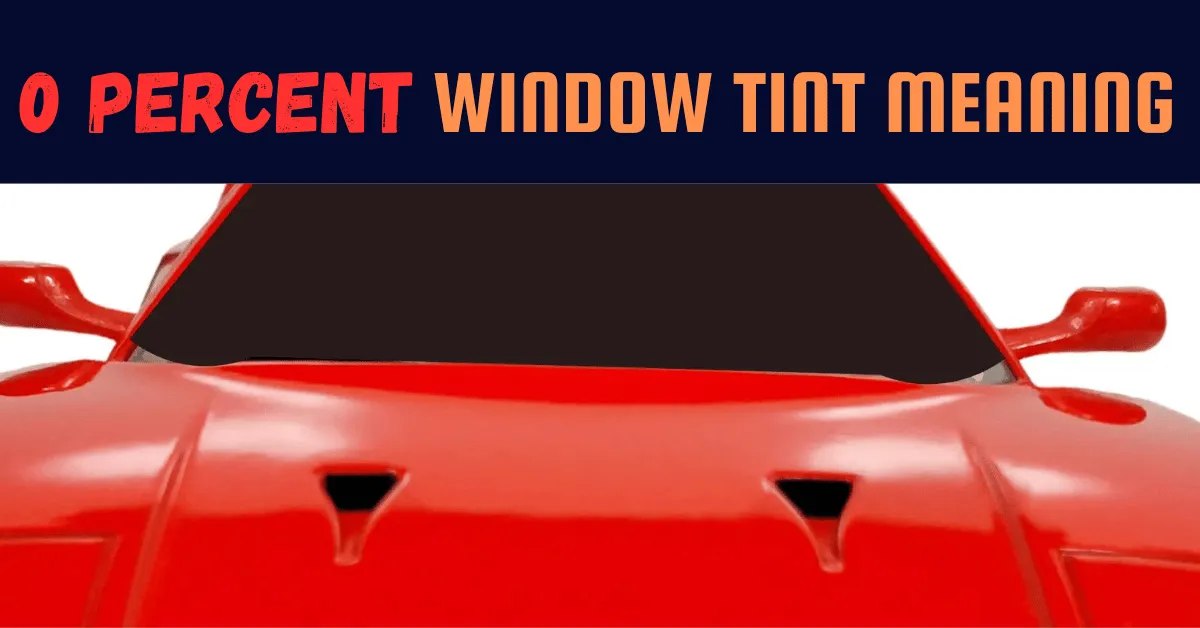A 0 percent tint is the darkest type of window tint on the visible light transmission (VLT) spectrum, which measures the amount of light that passes through a window. This type of window film will block out the most ultraviolet (UV) rays, as well as provide maximum privacy inside the vehicle. It is nearly impossible to see through the windows of a vehicle with a 0 percent tint, even if you have an additional light source shining on it. However, it is important to note that a 0 percent tint is illegal in all states because of safety concerns. If you want to be sure you are following the law and complying with state tinting laws, it is best to choose a tint with a higher VLT percentage that is allowed for that particular state.
What does 0% tint look like?
The darkest tint that can be applied to a vehicle is 0 percent tint. This level of tinting makes it almost impossible to see inside the car from the outside and extremely difficult to see out of the car from the inside. It is not a practical choice for everyday driving as it makes it difficult to operate the vehicle, especially at night. In fact, it is illegal to install 0% window film on vehicles that will be driven on public roads.

While 0 tint provides complete blackout of light transmission, it is not a common choice among private car owners because of its extreme level of darkness. On the other hand, 5% limo tint, which offers a significant level of privacy without affecting visibility, is a popular choice for those seeking privacy while driving. However, be sure to check out your local laws first.
Car Window Tint Percentage Visualization Tool
Select a percentage value from 1 to 100 to see how dark it is:
Selected Percentage:
Use the basic window tint visualization tool above to see how dark 0% tint is. Set the value to 0 and the tool will simulate the tint percentage for the most common black tinting film. However, for other tint colors, use our advanced tint percentage visualization tool. That said, the car picture below shows the comparison between no tint and 0% tint.

Can you see through 0% tint at night?
Tinting your car windows with 0 percent tint is a highly challenging and potentially dangerous decision, both for the driver inside the vehicle and for pedestrians outside of it. At night, it is extremely difficult to see through 0 percent tint from inside the car, making it difficult to navigate safely. From the outside, it is impossible to see into the vehicle at all, even when pressing one's head against the glass. This can make it difficult for law enforcement to see inside the car and can attract unwanted attention. Additionally, the darkness of 0 percent tint can make it challenging to drive safely in low light or shaded areas.
How much does 0% tint cost?
Installing window tint on your vehicle can vary in price, depending on the type of film you choose. Standard, non-reflective tint film may cost anywhere from $125 to $650, while more premium options like ceramic, carbon, or specialized films can range from $200 to $625. It's important to note that the number of windows on your vehicle may also affect the price, as well as any additional services, such as removing the tint. The cost of removing tint can range from $25 to $200 or more. Ultimately, the price you pay for 0% tint will depend on a variety of factors.
Is 0% tint worth it?
No, 0% tint is not worth it. It provides little to no visibility while driving at night or in low light conditions, making it difficult and potentially dangerous to navigate. It also attracts the attention of law enforcement and can make it difficult for them to see inside the vehicle, which can lead to unwanted encounters. Overall, it is much safer and more practical to choose a lighter tint option, such as 35% tint, which provides enough visibility to drive safely while still offering some privacy. Of course, you need to check out the state law first.
Conclusion
Window tint that has a 0 percent visible light transmission (VLT) rating is the darkest shade possible on the VLT scale for window film. This means that it allows almost no light to pass through the window, making it completely opaque. We often use this type of window tint in commercial or government vehicles to increase privacy. However, it is important to note that using 0 percent tint can make it difficult to see out of the window, especially at night or in low light conditions. Therefore, it is illegal to use 0 percent tint on the front windows of a vehicle in all states except Michigan in the United States because of safety concerns. The inability to see clearly out of the front windows might cause accidents and harm to the driver and others on the road.

